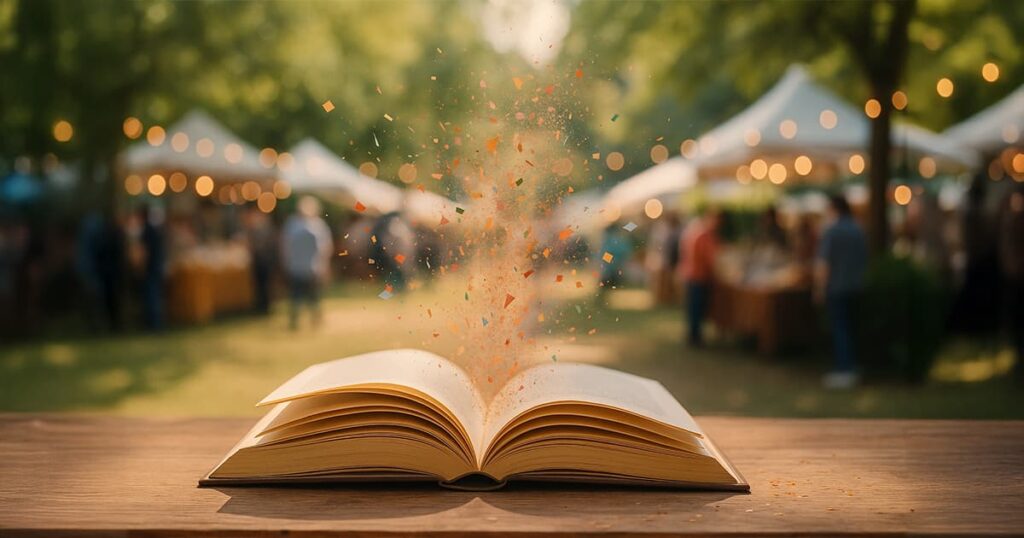How to Read 7 Books in 7 Days
There is too much to read, too little time. With the rise of ebooks, you have a library in the palm of your hand. As a result, many unfinished books are the product of time management and the lack thereof. There is nothing more frustrating than an unfinished book. And chances are if you do not finish a book within the first couple of days (or weeks at most), you will never finish it.

Basically, there will never be a set of rules which you follow to magically finish a book in a day. After all, the choice is yours. In a single week you can either read seven books or lose seven days trying. Like me, I’m sure you’re not a great fan of wasting time. That’s why there are certain techniques worth knowing to help you manage your reading time more coherently. This is what this article is about. These techniques can be divided into two subsequent parts: pre-reading and reading.
Pre-reading
Planning ahead
To achieve any of your goals, planning ahead is most essential, and reading is no different. You need to determine what you will read and when you will read it. For instance, if you are doing a 7 books in 7 days challenge, you don’t want to pick Leo Tolstoy’s War and Peace for a book (because you might as well do another challenge to finish it alone in 7 days). But rather pick the 7 books very, very carefully.
The first step is to research what you’re about to read. Read reviews; tons and tons of reviews. Remember that book your friend recommended, or the book with that awesome cover? It just might not be the one for you. Nevertheless, you know your taste better than anyone else. Read something that gives you drive. If you happen to start a book that turned out to be a drag, leave it immediately. You’re not on a mission; you should be reading for fun. So you can initially just skim through the first couple of pages to be on the safe side.
Location
Create a reading spot; may it be in a library, your balcony or even your bed. Just remember that your posture is as important, so don’t get too ensconced but rather sit upright. Your spot should be free of any distractions – those could be your worst enemy. At the same time, don’t limit your options. Read everywhere. You might as well be carrying your book or ebook reader with you everywhere and anywhere you know you’ll have some pending time to spend. So even if you’re not in your magical spot and got a 5-minute-break in between your lessons, read!
Technical stuff
Before devouring your book, you need first to make sure your eyes are comfortable. This actually can be a game changer without you even noticing it. You don’t want to start having headaches for no apparent reason when you’re halfway through your book. But carefully adjust the font size, color and screen brightness. You may prefer black background and white text or vice versa. In the case of a hardcopy book, adjust the environment lighting, if within your control. There is no right and wrong in this; just whatever your eyes are comfortable with.
Reading
Skimming
Honestly, don’t waste your time reading prologues, descriptions or about the author –unless there is a reason for you to do so. Essentially skip anything that isn’t important. You can even skip whole passages from the book; reading word by word is long gone. You’ll be saving yourself hours of reading time by only scanning for important words and skimming the rest. Unless you want to enjoy tasting every word of that favourite Harry Potter Chapter 5, be my guest – but with all due respect, this article may not be for you.
To avoid making words stop you, avoid your dictionary as much as you can. Of course it is never too bad to enrich your vocabulary, but not this time. That’s why you need to first grasp and embrace the purpose of your reading. In most cases, you can guess the meaning of a word by its context. So just continue reading forward and don’t look back.
Speed reading
Speed reading helps the process of skimming. Of course there are numerous speed reading techniques that people learn throughout years of practice, and later teach those techniques to others. Technically, speed reading involves grouping words together and reading them in bulk. Your eyes can actually read up to five words at once. Thus, you can theoretically read 5 times faster. So if you read a book within five days, reading a book a day should be a piece of cake. In order to know your progress in speed reading, you need to time yourself, and continuously push yourself to take in more words in less time. Here are a few speed reading resources to read in your spare time:
- Scientific Speed Reading: How to Read 300% Faster in 20 Minutes
- Speed Reading: Learning to Read More Efficiently
- How to Learn Speed Reading
Also, here you can find an excellent resource to increasing your level of concentration:
How to Improve Concentration and Focus in Your Life
Pacing
The best way to apply the above two points is to fasten your pace. You can accomplish this very easily if you’re reading an ebook by using your fingers. Either scroll down with your finger faster or touch the screen for the next page quicker. You will inevitably feel the rhythm and pace in your movements.
Shut your sub-vocalization
Most of us already do it, but if you don’t, you need to start doing it now. It’s funny how a little voice in your head can really pull you back. Ever seen how a leashed dog tries to energetically charge towards another dog or cat, but is overpowered by its leash? Your brain’s capacity has the ability to absorb much faster than the speed of your sub-vocalization. In essence, sub-vocalization is your inner monologue – reading word by word in your mind while moving your lips. You need to stop doing both. If you are skimming or speed reading, you will find that your sub-vocalization is inevitably fading.
Listen to white noise
According to entrepreneur Emerson Spartz, listening to white noise can help anyone read between 30% to 200% faster because it purely eliminates distractions. Well, if you planned the right setup in the first place, there won’t be any distractions anyway. But if you are in the middle of a noisy crowd, listening to white noise will immediately shut you out of this world. Some of us prefer listening to music; it’s okay as long as it is vocal-free and won’t distract you. But if you will end up covering up on distractions by another distraction, white noise is your best friend.
Conclusion
These techniques should ultimately help you achieve your reading goal. If you read an average of 20 books a year, you can easily push that up to 100. It’s important to continuously challenge yourself – that’s how self-development happens. Later on, reading will be so much easier and more entertaining.
A word of advice for students: note that you should not under any circumstances do any of the second part (reading) techniques while studying, because it can actually have a negative effect. And remember, if reading didn’t come naturally, do not force yourself. Reading a boring book can be the most daunting task to do.
You may also like:
Writing Process Explained for Non-Writers
10 Tips to Write a Book Blurb That Sells
How to create an interactive ebook: A step-by-step guide















